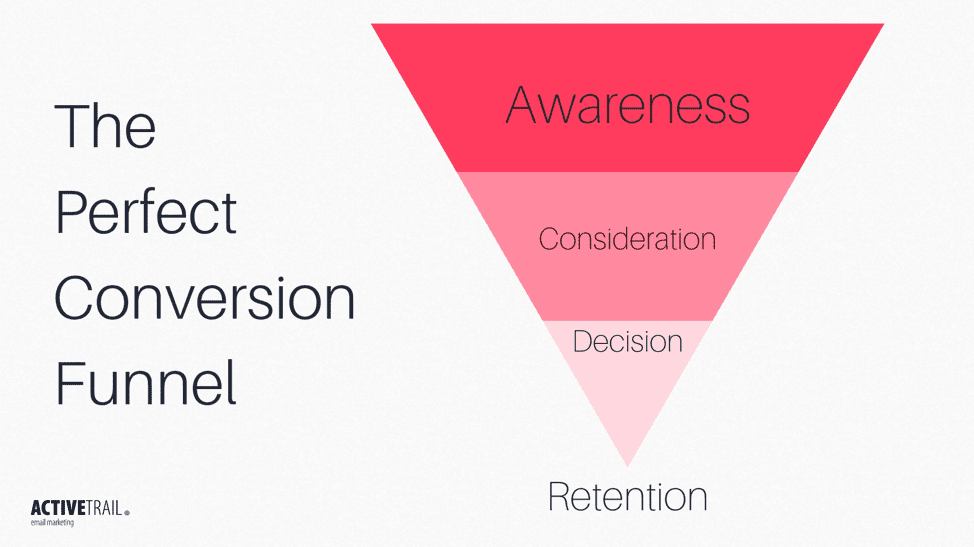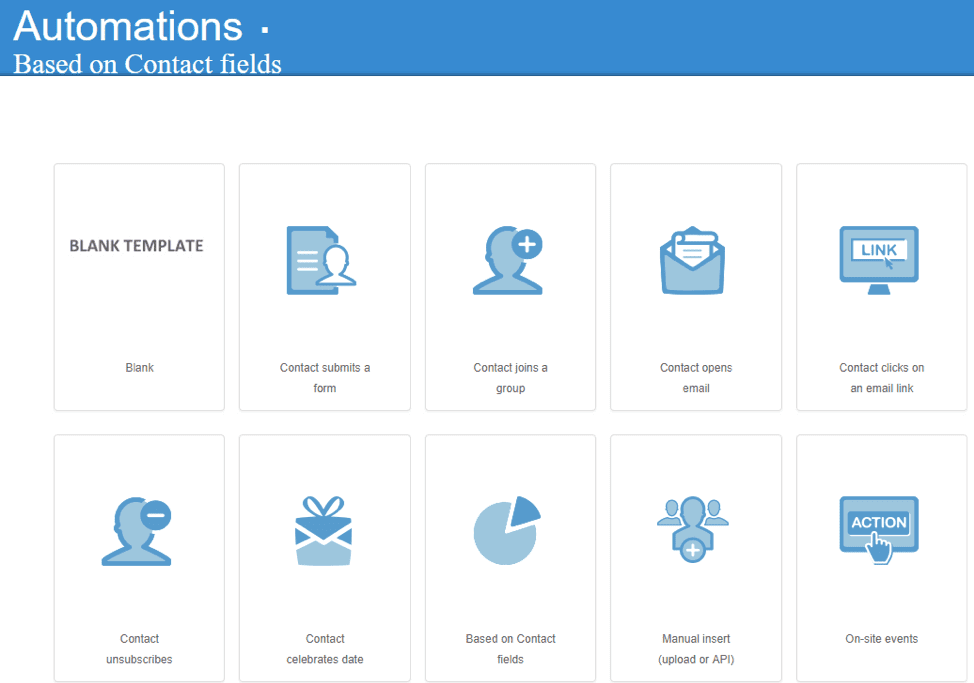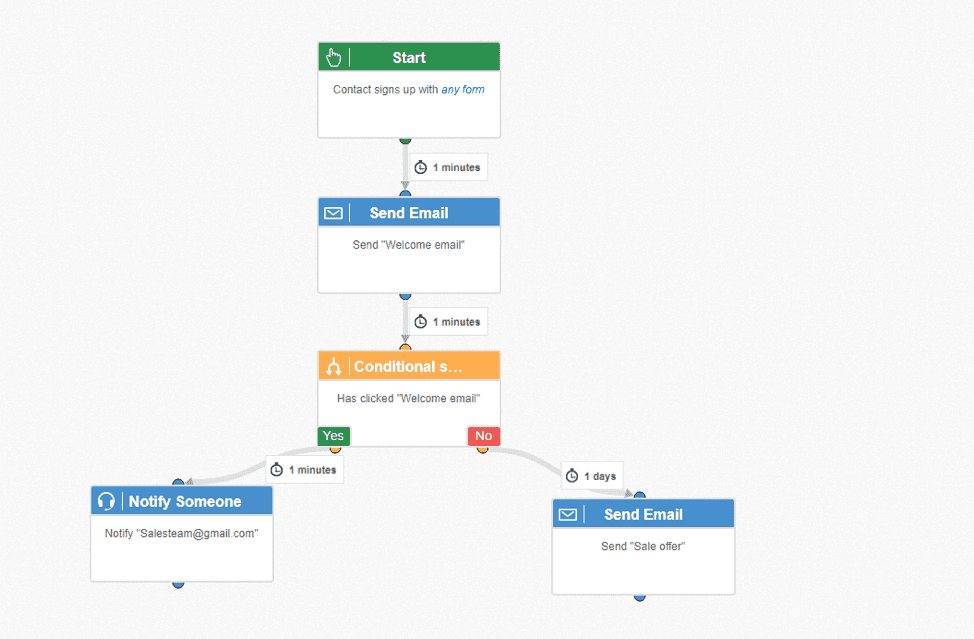“Diamonds are forever but converted customers are even better” (unknown digital marketing guru). We couldn’t agree more, and marketing automation is the perfect tool for optimizing your conversion funnel. We invite you to read on to learn how to streamline your funnel with an automation tune-up.
As diamonds make their way from mine to shop, an assortment of professionals carefully tends to them, transforming “rocks” into luxurious jewels. Much in the same way, businesses strive to convert leads into valuable assets, i.e. customers, by nurturing them along their journey from awareness to conversion. Marketers call this a “conversion funnel”, and marketing automation, such as that offered by leading email marketing platforms, is all about making the best funnels possible.
Yet, the automation of your conversion funnel has another far-reaching benefit. The process of building and configuring automated activities for your funnel forces you to frame your efforts in a strategic perspective, considering how each interaction with your leads affects their movement towards conversion.
This dual value of funnel automation, practical and strategic, is translating into real-world results. A 2017 study by Regalix showed that marketing automation was driving up sales productivity by as much as 14.5% and reducing marketing overhead by 12.2%, with lead nurturing being one of the primary ways businesses use automation.

Funnel Basics (and More)
Let’s start with the foundations, the conversion funnel. Most digital marketing professionals describe funnels as four or five-stepped online lead conversion processes in which a company’s marketing efforts guide potential customers from finding out about the company’s offerings to taking a specific desired action, e.g. buying a product.
Many also include post-action/post-sale activities to keep a converted customer coming back. Naturally, each stage of the funnel is narrower than the previous. Not everyone who becomes aware of your offerings will be interested and not every interested party will want to buy, etc.
Conversion funnel stages and automation possibilities:
1. Awareness
This initial stage focuses on activities that help you reach new audiences, introducing them to what it is you do and offer. Critical to this step, as discussed below, is segmentation. Targeting and attracting the wrong audience is a good way to drive down your conversion rate, wasting time and marketing dollars along the way.
Here you will also employ your website, newsletters and other content to position your brand as the preferred alternative, the authority on “the subject”. Your goal is to make meaningful contact with your leads, piquing their interest enough for them to leave their contact information. Layout, graphics and copy are paramount to success at this stage, so considering using proven templates and assistive tools, such as email and landing page builders.
Typical awareness activities include PPC campaigns, SEO/organic search and social media marketing.
Automation Examples
Before starting your automation, you will want to collect as many leads as possible (more leads going to your funnel means more conversions coming out). Create a gated content offer and every time a site visitor downloads your content, you will receive their email address, the email address of a new lead. Use this to trigger a conversion automation process.
Now that your leads are aware of your brand and have registered to hear more about your business, your products and your services, it’s time to let them in on just how great these are.
2. Consideration
At this point, you have your leads’ attention and are looking to cultivate that interest, moving them to want your products and services, to find out detailed information about your offerings and how to buy them in order to make a smart decision, the “right” decision.
On a process level, email campaigns (especially automated campaigns such as email autoresponders and drip campaigns) and similar work well to foster desire. In your campaigns, you’ll want to use attention-grabbing elements that provide details, such as attractive product photos and descriptions, as well as highlighting special promotions and discounts.
Automation Examples
Create a workflow with compelling messaging to nurture your leads and show them what is it you have to offer them:
- Base your automated workflow on timing, personalization and segmentation, for instance, use segmentation (based on customer details gained in the awareness stage) to send individually tailored offers and promotions.
- A/B test your campaigns as much as possible to raise your conversion rates even higher.
- Drip campaigns that gradually expose sign-ups to your business and offerings, with increasing detail and specificity.
3. Decision / Action
This is what your funnel has been building up to, the instant of conversion when a lead decides to and takes the action you have been guiding them to. For most, this is when a lead makes a purchase and becomes that coveted asset, a paying customer, although actions may be something else, such as signing up for a mailing list or providing support for a cause.
Using marketing terminology, at this stage of the conversion funnel your leads are moving from being marketing qualified leads (MQLs) to sales qualified leads (SQLs). This means that the conversion funnel is slimming down to its narrow end, bringing your sales team into action to give your leads that final push to convert.
Once they have decided to take the plunge, your job is also to make taking the action as frictionless as possible, whether it be making purchasing easy or supplying clear instructions. Automation, of course, can be used here too, for instance, by integrating email automation with your e-commerce platform, you can send “abandoned cart” emails, to try and get people back to complete their purchases.
Automation Examples
- Add a “meeting set-up” email to your automated email workflow. The meeting can be held over the phone or in person.
- Send an incentive to entice your leads to convert, e.g. a discount, a coupon code, a free webinar, etc.
- Show off your statistics, highlighting what other customers have gained from your service.
- Abandoned cart emails as described above.
4. Retention
The moment after a customer converts is the moment you need to begin living up to the expectation you have set, ensuring their satisfaction and doing all that you can to keep them as long-term/repeat customers. When done right, retention efforts are like an abbreviated funnel, where you can skip the awareness, and possibly the consideration phases, focusing on decisions and actions.
Automation Examples
- Send a “thank you” email with helpful tips, shipping information, etc.
- Follow up with an “onboarding” email that helps users begin using your offerings.
- Send upsell and cross-sell offers, which can spin-off into new automation workflows.

Harnessing your Funnel with Automation
By now I think we’re on the same page and understand that a conversion funnel is not a type of tornado. However, with that said, a well-crafted funnel that incorporates automation can be just as powerful.
In the first part of the article, we touched on the various types of automation you can use at each stage of your conversion funnel. However, as we mentioned at the start, the thought process of designing your automated funnel and related activities is just as, if not more important than the actual automation you put in play. We recommend, therefore, taking a structured approach, to make sure your automation and the funnel itself are tightly rooted in a well-rounded strategy:
1. Planning
If you’re reading this, there is a fair chance that you have formulated conversion funnels in the past. Mostly, what we suggest here is probably quite similar, but now we ask you to add automation to your planning equations from the get-go, which might mean adding in factors you haven’t considered before or shifting the emphasis. Here are some of the things you will want to include when meshing an automation workflow with a conversion funnel:
- Segmentation – Always important, segmentation is often crucial at forks in your workflow, guiding leads with different needs and interests down different automation branches. For example, as a travel agency, you might want your leads to take different actions depending on the destination they showed interest in.
- Channel definition – Know all the channels you plan to use in your funnel ahead of time, so you can figure out how automation will fit in and if your automation tool supports the channels you wish to use.
- Navigation – It should always be clear to your leads what the next step is, and they should never feel boxed in without any good alternatives. Automation helps you achieve this. For instance, if someone reaches one of your product pages, but isn’t interested and decides to leave the page, you can display a pop-up that asks them why they are leaving. You can then send them a notification (if you have that information) based on their choice.
2. Execution
Next, you should consider:
- Whether you wish to automate specific tasks, specific stages in your funnel, or your entire funnel.
- Which Marketing Automation Platform to use.
- High-level statistics relevant to your specific case (e.g. what’s the optimal number of emails to send out for a given funnel).
- Which automation to use and at which stage. Additional examples to those we mentioned above might be:
- Collecting leads on social media and “funneling” them into my email marketing application.
- Sending SMS messages at certain, important phases of the funnel.
- Integrating sophisticated tracking mechanisms into your website, to trigger emails based on pages the user visited on your site.

3. Optimization and Retention
Once your automated funnel is up and running, drawing in leads and pumping out customers, you should plan to be vigilant, ever on the lookout for opportunities to improve your funnel through structural changes or by adding/changing the automation it employs, for example, through the use of A/B testing and performing post-mortems to identify cogs that aren’t working well.
At the same time, you’ll also want to expand your funnel, to include customer retention and resales effort. These might include sending automated follow-up emails (say, after six months), or sending upsell and/or cross-sell offers.
Summary – Automate your funnel, and the sooner the better.
A clearly defined funnel is, in itself, a proven method for increasing conversions. Adding in automation will not only improve numerous business and financial metrics, but it will give your customers a more fluid and satisfactory experience, a “diamond level” experience, if you will, such that they may not feel that they are being “guided” down a funnel at all!